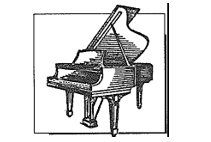Zoltan Kodaly: Psalmus Hungaricus; Hungarian Rondo; An Ode; Budapest Philharmonic Orchestra and the Hungarian Radio Chorus; Conducted by Árpád Joó; Sefel; Park Ridge, NJ.
Zoltan Kodaly: Missa Brevis; Te Deum; Budapest Philharmonic Orchestra and Hungarian Radio Chorus; Conducted by Árpád Joó; Sefel; Park Ridge, NJ.
Zoltan Kodaly: Peacock Variations; Symphony; Budapest Philharmonic Orchestra and Hungarian State Concert Orchestra; Conducted by Árpád Joó; Sefel; Park Ridge, NJ.
Zoltan Kodaly: Galimta Dances; Concerto for Orchestra; Minuetto Serio; Budapest Philharmonic Orchestra and Hungarian State Concert Orchestra; Conducted by Árpád Joó; Sefel; Park Ridge, NJ.
Zoltan Kodaly: Marosszek Dances, Folk Dances of Kallo; Summer Evening; Hungarian Radio Chorus and Budapest Philharmonic Orchestra; Conducted by Árpád Joó; Sefel; Park Ridge, NJ.
Zoltan Kodaly: Hary Janos Suite; Theatre Overture; Ballet Music; Bndapest Philharmonic Orchestra; Conducted by Árpád Joó; Sefel; Park Ridge, NJ.
Until the 19th century, most art, whether great or transitory, was the fruit of the unconscious.Written to order for patrons or for the Church, it tried to be that which was required. Masses strove to provoke religious sentiment, cancertos dazzled with their brilliance, operas hoped to stir the emotions of the upper classes with elaborate constructs drawn from classical literature, such as Monteverdi’s The Coronation of Pompey or saucy satires on contemporary manners, like Mozart’s Cosi Fan Tutti. Though the patron system has suffered nearly a century of abuse and derogation, it produced the music of Mozart, Bach, and Haydn, the art of da Vinci and Michelangelo, and the architecture of Bernini and Wren.
With Beethoven, everything changed. By asserting his moral and intellectual superiority over the society around him, he helped to create the cult of the artist. No longer was the composer/sculptor/writer the technician of a cultural and social elite. Now the artist was an end unto himself–he did not reflect the world, he shaped it. Increasingly, audiences failed to follow. After a Wagner opera, Gioacchino Rossini said, “One can’t judge Lohengrin by a first hearing, and I certainly don’t intend to hear it a second time.” Epitomizing the confusion of many, Mark Twain avowed that “Wagner’s music is better than it sounds.” With the advent of the 20th century, the creating elite saw their role not so much as leading the ignorant masses, as Wagner had, but as embodying the living expression of dissent against the times. “Art,” declared Paul Gauguin, “is either a revolutionist or a plagiarist.” All too often, the artistic merits of works were gauged by the disgust they created in the minds of the hearers and viewers. Near riots at the introduction of The Rite of Spring served to launch the career of Igor Stravinsky. Opposition by audiences and bureaucrats aided the recognition of Shostakovich, Prokofiev, Bartok, Mahler, Alban Berg, and John Cage. Composers who refused to conform to the dictates of cultural trends were labeled “bourgeois.” Increasingly, classical music, once the shared avocation of educated people around the globe, became the captive of a cultural cognoscenti.
Yet not all contemporary composers have marched in lockstep with the tempo of the times. Just as the early 20th century promoted revolutionary and millenarian causes designed to shape the “new man,” it also spawned nationalistic movements, which sought to explore the roots of traditional culture. Through this process of discovery, new sorts of music emerged.
In England, Ralph Vaughan Williams (1872-1958) and Gustav Holst (1874-1934) spent years tramping the British countryside, collecting folk songs. They fashioned, from the themes of these, compositions too little heard in the concert halls. In Finland, Jean Sibelius created a wholly new music based on legends in the Finnish epic The Kalevala, while in the U.S., George Gershwin fused European classical traditions together with the essence of American jazz to create works whose very popularity has retarded their full acceptance by the cultural commissars. In Hungary, just prior to World War I, Zoltan Kodaly and Bela Bartok began to fashion a music based on that nation’s rich folk heritage.
Bartok, of course, is the better known of the two. A true swimmer in the intellecual currents of the time, his compositions, with their dissonances and stridency, command attention throughout the world. Probably more popular in his native land is Kodaly, whose music, like that of Vaughan Williams and Gershwin, is distinctly national. Like both composers, Kodaly was influenced in his youth by the Impressionists. The earliest of his compositions, represented in Summer Evening, is imitation Debussy. But what an evocative substitute! The work, though hardly known, would receive a warm welcome on any concert program.
Caught up in the currents of World War I, which produced an independent Hungary for the first time incenturies, Kodaly’s music took a decidedly nationalistic turn. Pieces such as the Marosszek and Galanta Dances, the Peacock Variations, and the Folk Dances of Kallo celebrated the new nation’s ancient folk traditions, while the opear Hary Janos, the music of which Kodaly fashioned into a popular suite, poked gentle fun at the same.
It was through the vocal arts that Kodaly made his most lasting contributions to both composing and his country. Written in 1923 to celebrate the 50th anniversary of the unification of Buda and Pest, the Psalmus Hungaricus is, in fact, an impassioned musical protest against the dismemberment of Hungary in the chaos following the end of the Great War. It’s Kodaly’s greatest work. Nearly its equal is the Missa Brevis, drafted in 1944 during the siege of Budapest by the Red Army, a Soviet victory which led to the extinction of Hungary’s brief spark of liberty. Through the extremes of its vocal articulations, you sense Kodaly’s forebodings of the times to come.
“Art,” wrote England’s Vaughan Williams, “like charity, must begin at home. If it is to be of any value it must grow out of the very life of the composer, the community in which he lives, the nation to which he belongs.” By daring to be particular, Kodaly’s music touches us all.

Leave a Reply